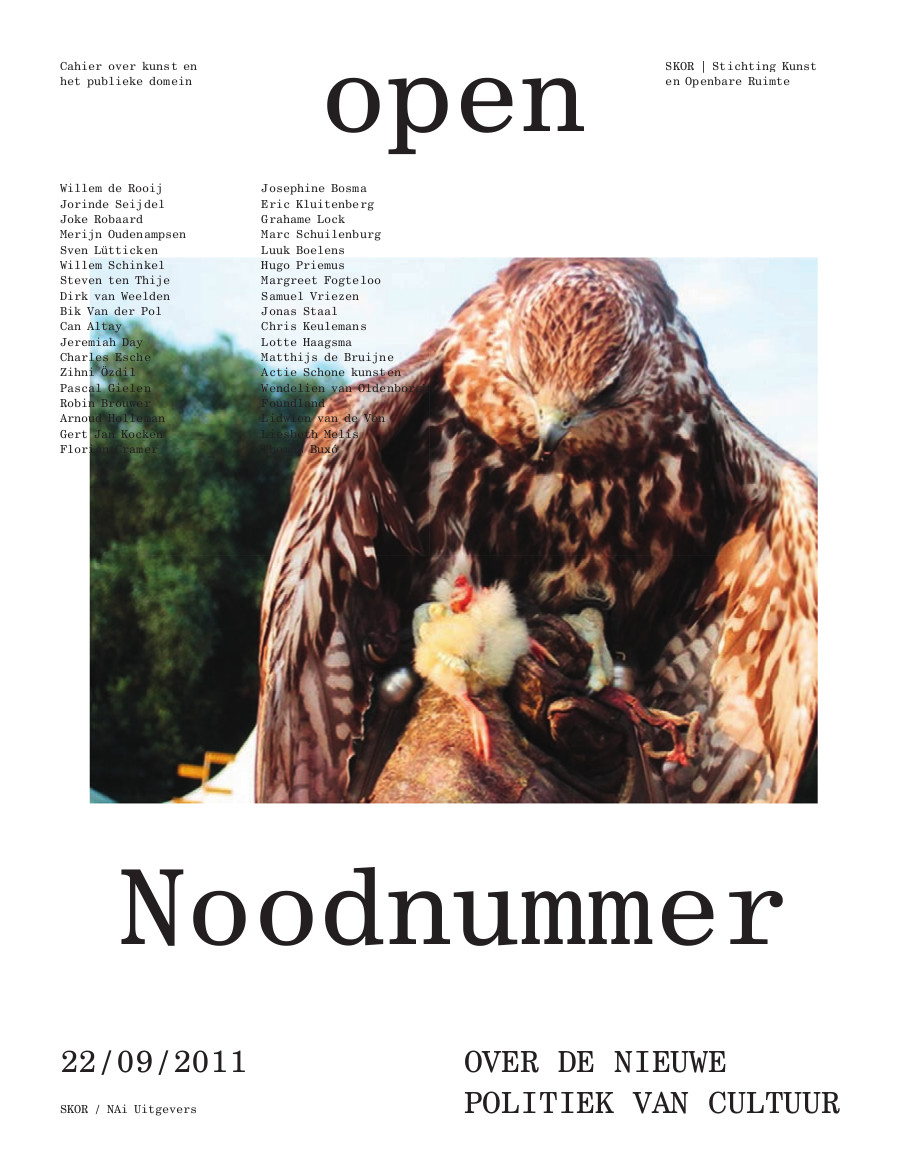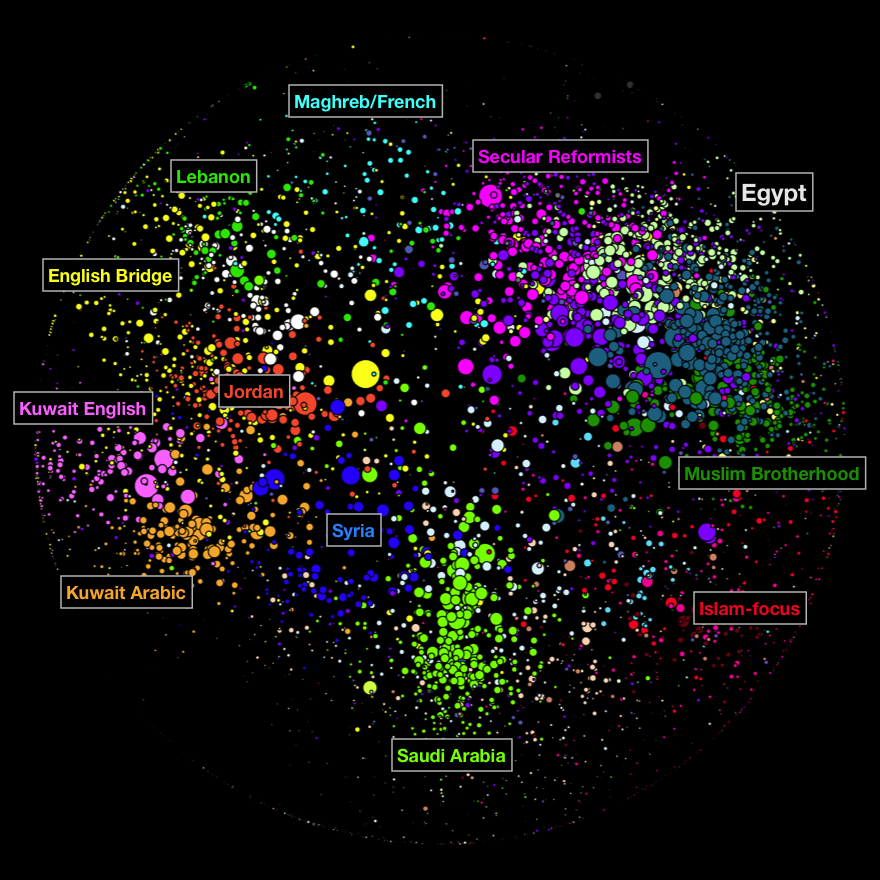Mapping the Arabic Blogosphere: Politics, Culture and Dissent (2009)
Filed under report | Tags: · blogging, culture, egypt, human rights, internet, islam, middle east, networks, politics, religion
“We conducted a study of the Arabic language blogosphere using link analysis, term frequency analysis, and human coding of individual blogs. We identified a base network of approximately 35,000 active blogs, created a network map of the 6,000 most connected blogs, and with a team of Arabic speakers hand coded 4,000 blogs. The goal for the study was to produce a baseline assessment of the networked public sphere in the Arab Middle East, and its relationship to a range of emergent issues, including politics, media, religion, culture, and international affairs.”
Authored by Bruce Etling, John Kelly, Rob Faris, John Palfrey, Internet and Democracy
Published by Berkman Center, June 2009
Internet & Democracy Case Study Series
Berkman Center Research Publication No. 2009-06
62 pages
Bureau for Open Culture: On Symptoms of Cultural Industry (2011)
Filed under brochure | Tags: · art, culture, culture industry

On Symptoms of Cultural Industry investigates the role of artistic and cultural production in relation to the economic and social life of North Adams, Massachusetts. Through original research interviews with employees of Sprague Electric–the manufacturer that originally occupied the massive industrial complex that is today MASS MoCA–and in response to living in this city, the work comprehensively manifests as performance, video, installation and a book. It forms an intimate portrait of a city that has transformed from an economy of manufacturing goods and materials to increasingly manufacturing culture and information.
By James Voorhies, with Timothy Nazzaro, Nate Padavick, Rachel Sherk, Cassandra Troyan
Presented as part of Open Engagement in Portland, Oregon, in May 2011, and at MASS MoCA in North Adams, Massachusetts, in July.
32 pages
OPEN Cahier on Art and the Public Domain: Emergency Issue. The New Politics of Culture (2011) [Dutch]
Filed under magazine | Tags: · art, creative industries, culture, education, environment, ideology, knowledge, multiculturalism, netherlands, politics

“The Dutch government’s new cultural plan and the cutbacks have intruded on our comfort zone and roughly awoken us from our reflective and theorising positions as critical observers.
This ’emergency issue’ of Open. Cahier on Art and the Public Domain is a special edition that accompanies De Groene Amsterdammer on September 23, 2011. It not only addresses the austerity measures, but also pays special attention to the overarching ideology and the right-populist government policy from which these arise.
Similarly, the publication does not merely defend the position of the arts, but is a record of public opposition to what many believe is a malicious policy that is adversely affecting or excluding growing numbers of groups (the sickly, immigrants, refugees, children, the elderly, artists, ‘ordinary’ people) and issues (relating to culture, knowledge, the environment, education, health care, multiculturalism).”
With contributions by Willem de Rooij, Jorinde Seijdel, Joke Robaard, Merijn Oudenampsen, Sven Lütticken, Willem Schinkel, Steven ten Thije, Dirk van Weelden, Bik Van der Pol, Can Altay, Jeremiah Day, Charles Esche, Zihni Özdil, Pascal Gielen, Robin Brouwer, Arnoud Holleman, Gert Jan Kocken, Florian Cramer, Josephine Bosma, Eric Kluitenberg, Grahame Lock, Marc Schuilenburg, Luuk Boelens, Hugo Priemus, Margreet Fogteloo, Samuel Vriezen, Jonas Staal, Chris Keulemans, Lotte Haagsma, Matthijs de Bruijne, Actie Schone kunsten, Wendelien van Oldenborgh, Foundland, Lidwien van de Ven, Liesbeth Melis, Thomas Buxó
Publisher: SKOR / NAi Uitgevers, September 2011
68 pages
PDF (updated on 2013-2-6)
Previous issues


